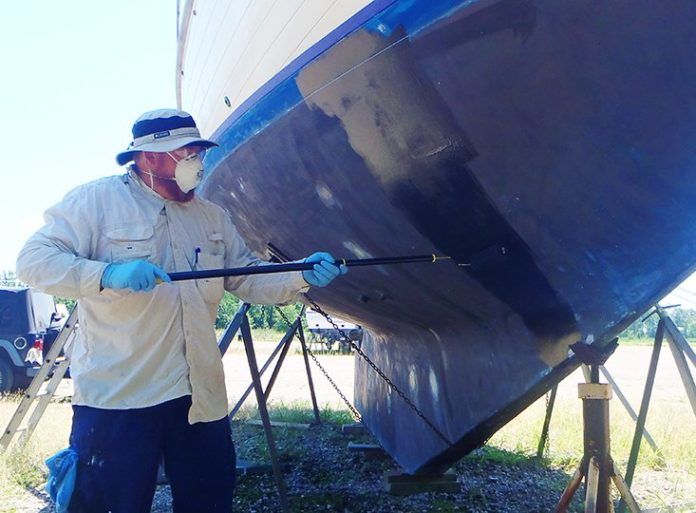
A fairly significant change has taken place in the world of antifouling paint for recreational boaters in the United States. Last year, multi-national chemical company BASF decided it would not renew its U.S. license for the pesticide Irgarol. A common additive to copper-based paints, Irgarol helps prevent the growth of algae and other soft growth.
Our tests have shown that although Irgarol doesn’t lengthen the duration of antifouling protection on our test panels, it can noticeably help prevent slime growth during the first few months after immersion. As a result of BASFs decision, most manufacturers have a limited supply of Irgarol paints and have been phasing out products that contain it. Paints containing Irgarol are still on store shelves, but these inventories are expected to run out as early as this spring.
Bottom paints containing Irgarol are priced around $30 higher than similar formulas without the additive. If you are a seasonal sailor or a racer and you are drawn to a slime-resistant ablative paint, be sure to confirm that Irgarol is still an ingredient before plunking down the extra cash. Buyers will have to look at the active ingredients to determine whether a paint touted as slime resistant actually contains Irgarol 1051. As required by the U.S. Environmental Protection Agency, Irgarol 1051 is prominently listed in the active ingredients, usually under its systematic name, N-Cyclopropyl-N-(2-methyl-2-propanyl)-6-(methylsulfanyl)-1,3,5-triazine-2,4-diamine. It typically represents about 2 percent of the paint by volume.
Once the stock does run out, it wont be the end of the world. Many of the paints that once contained Irgarol now rely on added zinc to keep soft growth at bay, and based on our tests, this new approach works very well.

CHOOSING A BOTTOM PAINT
Our advice for choosing a bottom paint remains the same as always:
Make sure the paint is compatible with your existing antifouling, or be prepared for whatever extra prep work might be required. Usually, all that is required is some light sanding and possibly a primer coat, although in some cases, more aggressive sanding and surface prep is required.
Make sure the paint matches your needs. Paints are formulated for specific conditions. We loosely classify bottom paints into two categories: hard paints and ablative paints. Hard paints hold up well to underwater cleaning and can usually be burnished smooth for racing. However, the layers that hard paints leave behind build up over time and eventually will need to be sanded off. Also, hard paints can require a light sanding before re-launch, or even lose their punch altogether if they are stored ashore for too long.
Most ablatives can be hauled and re-launched without worry. Ablative paints wear away, so they don’t build up paint layers over time. There are two main types-bottom-tier workboat ablatives that slough away to activate more biocide and more expensive copolymer ablatives that release biocides at a more controlled rate. Although ablatives are often called soft paints, some are relatively hard; these paints are sometimes referred to as hybrid paints and will usually resist light, underwater cleaning and are suitable for applying to trailered boats.
Hard and ablative paints are further divided into five broad sub-categories that often overlap: freshwater paints, aluminum paints, racing paints, water-based paints (easy for the do-it-yourselfer to apply), and eco-friendly paints. Paint types are indicated in the tables accompanying our March 2016 bottom paint report, and the best paints in each category earn Recommended ratings.
For the year-round sailor, long-lasting protection is a top concern. In past tests, weve broken down long-term performance by category and noted overall trends. Based on what weve found, the paints usually fail in this order, first to last, by type: freshwater paints; eco-friendly paints; low-copper, single-season paints; water-based paints; high-copper, multi-season ablative paints; and high-copper, multi-season hard paints. The much touted, quick-drying, dual-resin paints, introduced three years ago, have apparently lost favor and are not in the roster of most paint lines anymore.
With Irgarol out of the picture, zinc pyrithione is now the most common antifouling booster. Like Irgarol, zinc is most effective in the early months of immersion, and this test-panel checkup bore that out.
For more on selecting bottom paints, see the Inside Practical Sailor blog post Choosing a Bottom Paint for Dummies.




































